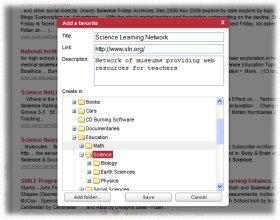|
Education
Web
Viewing 1-2 of 2 total results
GLOSSARY appeal to pathos (pity) appositive archetypal criticism archetype attack ad hominem bandwagon base word blend boundary climax clustering complement A common fallacy in arguments, the ad misericordiam approach is a special case of the appeal to emotion in...
1
0
GLOSSARY appeal to pathos (pity) appositive archetypal criticism archetype attack ad hominem bandwagon base word blend boundary climax clustering complement A common fallacy in arguments, the ad misericordiam approach is a special case of the appeal to emotion in which the altruism and mercy of the audience are the special emotions to which the speaker appeals. A word or phrase that restates or modifies an immediately preceding noun. Note: An appositive is often useful as a context clue
84
0
http://www.cde.ca.gov/be/st/ss/documents/elacontentstnds.pdf#page=84
www.cde.ca.gov/be/st/ss/documents/elacontentstnds.pdf#page=84
Glossary active voice A verb form <span class="highlight">in</span> which the subject <span class="highlight">of</span> the verb carries out some action. Example: He hit the ball. affix A bound (nonword) morpheme that changes the meaning or function <span class="highlight">of</span> a root or stem to which it is attached, such as the prefix <span class="highlight">ad</span>-and the suffix -ing <span class="highlight">in</span> adjoining. alliteration The repetition <span class="highlight">of</span> the same sound, usually <span class="highlight">of</span> a consonant, at the begin- ning <span class="highlight">of</span> two or more words immediately succeeding each other or at short intervals. Example: The repetition <span class="highlight">of</span> f and g <span class="highlight">in</span> fields
85
0
http://www.cde.ca.gov/be/st/ss/documents/elacontentstnds.pdf#page=85
www.cde.ca.gov/be/st/ss/documents/elacontentstnds.pdf#page=85
GLOSSARY appeal to pathos (pity) appositive archetypal criticism archetype attack <span class="highlight">ad</span> hominem bandwagon base word blend boundary climax clustering complement A common fallacy <span class="highlight">in</span> arguments, the <span class="highlight">ad</span> misericordiam approach is a special case <span class="highlight">of</span> the appeal to emotion <span class="highlight">in</span> which the altruism and mercy <span class="highlight">of</span> the audience are the special emotions to which the speaker appeals. A word or phrase that restates or modifies an immediately preceding noun. Note: An appositive is often useful as a context clue
role of the United States in world affairs after World War II. 11.5 Students analyze the major political, social, economic, technological, and cultural developments of the 1920s. 1. Discuss the policies of Presidents Warren Harding, Calvin Coolidge, and Herbert Hoover. 2....
1
0
role of the United States in world affairs after World War II. 11.5 Students analyze the major political, social, economic, technological, and cultural developments of the 1920s. 1. Discuss the policies of Presidents Warren Harding, Calvin Coolidge, and Herbert Hoover. 2. Analyze the international and domestic events, interests, and philosophies that prompted attacks on civil liberties, including the Palmer Raids, Marcus Garvey’s “back-to-Africa” movement, the Ku Klux Klan, and immigration quotas and
56
0
http://www.cde.ca.gov/be/st/ss/documents/histsocscistnd.pdf#page=56
www.cde.ca.gov/be/st/ss/documents/histsocscistnd.pdf#page=56
role <span class="highlight">of</span> the United States <span class="highlight">in</span> world affairs after World War II. 11.5 Students analyze the major political, social, economic, technological, and cultural developments <span class="highlight">of</span> the 1920s. 1. Discuss the policies <span class="highlight">of</span> Presidents Warren Harding, Calvin Coolidge, and Herbert Hoover. 2. Analyze the international and domestic events, interests, and philosophies that prompted <span class="highlight">attacks</span> on civil liberties, including the Palmer Raids, Marcus Garvey’s “back-to-Africa” movement, the Ku Klux Klan, and immigration quotas and
|
